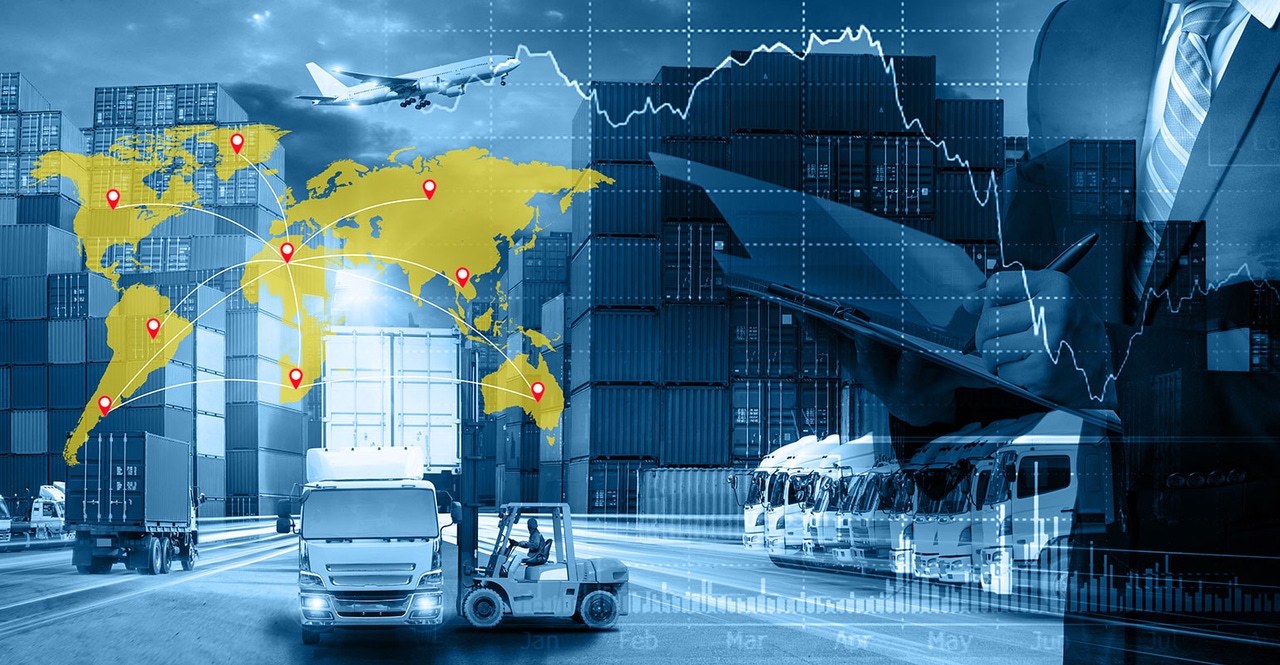IoT Lessons Based on Dell’s Cold Chain Logistics ExperienceIoT Lessons Based on Dell’s Cold Chain Logistics Experience
Dell’s IoT group has worked with a number of partners on cold chain logistics projects. A Dell exec sheds light on the most important lessons from these projects.
June 13, 2018

In the 1980s and 1990s, Dell gained a competitive advantage in the marketplace partly as a result of its made-to-order approach to manufacturing and logistics. The company’s approach to streamlining its inventory, forecasting demand and supply-chain segmentation helped make the company a sort of supply chain case study.
Dell’s IoT group has been increasing its focus on logistics, having focused initially on core manufacturing, energy and fleet use cases.
One niche where the company has been gathering experience is in cold chain logistics, which helps ensure that certain goods — ranging from food to chemicals to pharmaceuticals — stay within an optimal temperature range. To date, Dell has helped customers deploy edge infrastructure in grocery stores, where it can help prevent waste in the form of spoilage or excessive energy use.
To learn more about Dell’s IoT experience in cold chain logistics, we reached out to Jason Shepherd, IoT CTO, Dell Technologies, who describes the upsides to IoT-optimized cold chain strategies, as well as the challenges some business types face in deploying it.

What are the most important lessons you can draw from Dell’s experience with cold chain logistics?
Shepherd: The biggest lesson in cold chain is that it’s especially difficult to pull together end-to-end solutions when the chain isn’t vertically-integrated (e.g. single/few owners of production facilities, cold storage warehouses, shipping and delivery trucks, grocery stores, etc.). In highly heterogeneous supply chains, each participant has to agree on business imperatives and processes, and invest in interoperable infrastructure to seamlessly acquire and integrate data throughout the chain. Just look at how long we’ve been talking about RFID for dynamically tracking inventory in retail stores – only recently have we started to see large retailers able to mandate that all of their suppliers integrate tags.
In terms of business case, there’s obvious value in the food industry due to the amount of food spoilage and potential for foodborne illness, but the razor thin margins and challenges with supply chain complexity often make it difficult for grocers to justify the cost of implementing an end-to-end solution, so instead they tend to solve point problems. Easier to justify is end-to-end, real-time solutions in industries that transport high-value assets amid significant regulation for traceability, for example, in pharma. That said, traceability and sustainability are increasingly becoming a brand differentiator in consumer products which will be a motivator within the food industry alongside regulation. Food classes with more regulation such as seafood also drive more interest.
Blockchain is getting a lot of attention for supply chain in general. What do you make of that?
Shepherd: Blockchain is obviously highly relevant for ensuring traceability across a multi-party supply chain but also presents challenges. Compute power will be a challenge with public chains so we’ll see the most activity with permissioned chains among a constrained set of participants – perfectly fine for a set of suppliers in a cold chain but issues with business motivation and liability still need to be addressed. Transparency within a supply chain is great until someone in the chain is exposed for wrongdoing. For this reason, I think we’ll see initial adoption in highly regulated areas.
What is your take on sensor-related technologies and their potential to optimize the cold chain?
Shepherd: In terms of enabling technology, GPS has, of course, enabled real-time fleet tracking for some time and for cold chain, it has been standard practice for a while to use bulky loggers shipped with higher-value assets. However, these loggers require a manual process (e.g. upload from USB) for data acquisition, which is cumbersome and error prone. The next inflection point in smart logistics is the pervasive ability to track discrete assets in real time, but there are still technical challenges to address for widespread adoption. Today, there are two main approaches for this, each with a trade-off:
Sensors that are cheap enough to be attached to many lower value asset types (seafood, meat, flowers, cosmetics, etc.) because they’re basically disposable. These include emerging RFID tags that can also report temperature (e.g Indentiv’s uTrust). However, to meet cost and power constraints, these types of sensors require consistent gateway infrastructure throughout the supply chain to automate real-time readings and this gets back to the first problem of being difficult to implement widely without being vertically-integrated. The alternative is to only scan the historical data when the product gets to you but by then you could have been waiting for spoiled goods.
Sensors that offer multi-modal connectivity (BLE/WiFi/Cell) so they can backhaul data over existing infrastructure to the cloud, with the drawback of still being too expensive to be considered disposable and typically having a best-class battery life of about 90 days. Here, reverse logistics (e.g. getting the sensors back to redeploy) becomes a problem. Roambee is an example of an interesting company here. They provide a simple packaged solution for tracking your stuff as a logistics provider transports it between sites, which you can control. However, this type of solution is less applicable in more complex scenarios. Roambee addresses reverse logistics for their customers.
In terms of tracking location at every point in the chain, indoor location technologies are getting better but are still not cost-effective to deploy when high accuracy is required (for example inventory on a particular shelf). Video analytics and robot-driven scans are increasingly being used for inventorying purposes.
We’re getting close on hardware capabilities that will alleviate these trade-offs, but standards (both for connectivity and in areas like blockchain) and open computing frameworks like EdgeX are also important if you’re trying to integrate in real-time across a diverse supply chain while also maintaining a high degree of transparency. Even with all of the above, it still comes down to business imperative.
Other challenges include typical OT-IT collaboration (shadow IT with cloud-based solutions a common workaround), skills required for integration and analytics, etc.
How does Dell’s IoT group, with its focus on edge computing, help work with cold chain customers to optimize which data is processed at the edge versus the core versus a cloud environment?
Shepherd: Logistics solutions inherently involve the cloud to coordinate data throughout the chain, but we advise customers to implement edge computing in areas where there are concerns over uptime, data bandwidth and security. This could include, for example, performing critical refrigeration control and robotics automation at the edge so these functions work regardless of back-end connectivity. We’re also seeing an increasing use of video analytics across many use cases. In logistics, this includes surveillance, compliance, inventory tracking and warehouse worker safety. It definitely makes sense to process video at the edge/core with only critical events being backhauled. Data security can come into play in certain parts of a cold chain, for example, when hazardous chemicals are being manufactured or transferred, you are going to want to limit how much of your infrastructure or data you open up to the public internet, instead relying on edge compute and local area communication technologies as much as possible.
What does the convergence of technologies like IoT, blockchain, drones and AI/ML mean for the field of logistics?
Shepherd: I think the convergence and application of these technologies will drive both evolutionary and revolutionary change. Foundationally, these technologies will facilitate evolutionary improvements in areas such as operational efficiency, supply chain awareness, traceability, etc. I also tend to view the use of robotics and drones for automating warehouse operations as more evolutionary, same for tapping into more mobile and social technologies to drive supply chain efficiencies spanning stocking and dynamic pricing in stores to meet demand.
Where it gets revolutionary is when you consider how these technologies disrupt entire supply chains and drive new business models. This includes autonomous delivery vehicles (trucks, drones) and even areas such as 3-D printing, where goods are produced in real time close to where they’re consumed. We’ll see this happen sooner in constrained domains (e.g. vertically-integrated supply chains, single company offering discrete service) as it will still take time for heterogeneous autonomous supply chain ecosystems to develop due to the aforementioned challenges with interoperability and integration.
If you had to pick a handful pieces of advice based on your cold chain experience in particular and IoT background in general, what would they be?
Shepherd: The key advice is to architect for the unknown. Here are some thoughts:
Embrace efforts for open standards, both in terms of shaping and adopting
Software-define as much as possible and architect with cloud-native principles from edge to core to enable flexibility in how solutions come together and adapt over time. This includes loosely-coupled microservices, platform-independence, modern DevOps with continuous delivery, etc.
Stay up-to-date with trends, but don’t get caught up in the buzz
Have transparent discussions with your partners and customers
Be willing to take measured risk, but focus on solving core problems first. Trying to do too much at once can be paralyzing.
About the Author
You May Also Like






